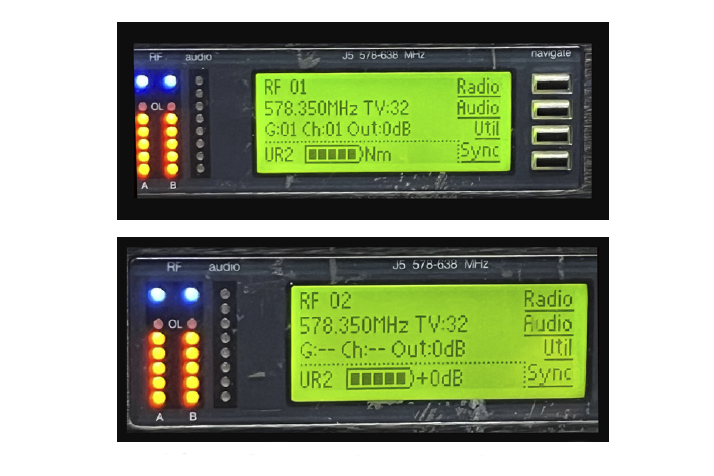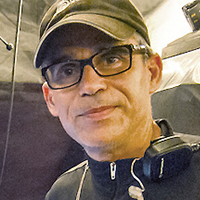In the past six months or so, the subject of frequency scanning wireless devices on shows and events has come up several times, so I thought it a good time to address the topic.
The ability to scan for a clear channel (or channels) with wireless microphone and in-ear monitor systems has been a capability for about 20 years. This was a terrific innovation on the part of wireless manufacturers, and to certain extent, has taken a lot of the guesswork out of selecting and deploying wireless frequencies.
There’s even a school of thought that to scan every time a wireless system is deployed is the responsible thing to do. However, the reality – or at least my reality – is that sometimes it’s the responsible thing to do and sometimes it should be avoided.
Situational Awareness
The question, then, is how do we know when scanning is the appropriate action and when it’s not? As is often the case, the answer is “it depends,” and what “it depends” on is the situation.
For example, in a fixed installation such as a house of worship or television studio, I contend that what’s appropriate is an up-to-date frequency coordination in which every wireless device has an assigned frequency. In these instances, why would you scan for new frequencies every time the system is used? The way I look at it, a wireless frequency is the link that a particular device uses to convey the information entrusted to it – a vocal, say, or an in-ear mix – just like a microphone cable is the link that conveys the signal from a mic. Would you walk into a venue and use different mic cables for an already patched stage every time you used the system?
I understand that the argument for scanning every time is “in case something has popped up.” However, wireless frequencies don’t just “pop up” by themselves, humans turn them on.

So, having some situational awareness about what’s going on in and around your venue is a great way of knowing if there may be other wireless users nearby. For example, at a house of worship you might ask if there are any weddings booked that day since weddings are known to attract wireless users such as videographers and DJs. Or, if you pull into the parking lot and see that all parking for three blocks on the other side of the street has been blocked off with traffic cones, perhaps a film shoot is planned nearby.
Further, if something has “popped up” and is causing interference, you should be seeing some RF activity on the display of the affected unit. If that’s the case, you might scan that one system to find an alternative frequency, but even then, the better course of action is to go to a pre-coordinated spare frequency – and try to track down the source of the interference.
At events where there’s on-site frequency coordination, scanning is definitely not the right thing to do. Why? The job of the frequency coordinator is to assign the cleanest spectrum to the most important RF channels.
At a sporting event, this might be the anthem mic and in-ear systems, the referee mics, the host broadcaster’s mics, IFBs and intercoms, etc. Now, if you show up an hour before game time and do a scan, many of those systems may be turned off for pre-game battery changes, so the scan will likely find some really clean open frequencies – that have already been assigned to some very important users. Lighting up one of those frequencies is a good way to get ejected from the venue.
In these situations, it’s vital to meet with the frequency coordinator and have them assign you a frequency (if available). Something I’ve found that often comes up in this scenario, especially when communicating via e-mail or text messages is, that I will get responses like “I can’t seem to tune to the exact frequency that you gave me, but I can find ones that are on either side of it. Can I use one of those?”
The Usual Protocol
The reason this is happening is that the user is used to tuning in the pre-assigned groups and channels that the manufacturer has set on the device, and the assigned frequency does not fall into any of those groups. However, most professional wireless devices have a “Tune” mode where they can be tuned to any and all frequencies in the device’s range.
The “step” size may vary by device – anywhere from 25 kHz to 275 kHz – but the frequency coordinator should know that about your system if you’ve provided them accurate make/model/frequency range information.
For example, a reporter might reach out to me and say “I have a Sennheiser EW100 G3 system in A band (516 to 558 MHz).” I enter that information into my coordination file and calculate a frequency. The program suggests a few frequencies, and I choose 525.525 MHz and send it to the reporter.
After a few minutes I get a reply saying they can’t tune to that frequency. That’s because that particular frequency has not been assigned to any particular Group, and the reporter only knows how to scroll through the “Group/Channel” settings. The trick here is to go into the “Advanced” menu, select “Tune,” and then the device will allow you to scroll to every frequency that it will tune to, in 25 kHz steps.
Once they select 525.525 and store it, the Group and Channel lines in the display will go blank, or show a few dashes, and only the frequency will be displayed. This is not an issue, that frequency is just as valid as any other one the device will tune to, it’s just not in a Group. Of course, this must be done on both the transmitter and receiver – you can’t tune to the exact frequency on one, and something close on the other (although, sadly, this may actually “work” – see my previous article The Real Problem With Wireless).
Shouldn’t we always use the Groups the manufacturer has pre-coordinated? Yes, if we’re working on our own and have multiple devices in the same range.
But at large, coordinated events, you’re essentially a “group of one” among several hundred other frequencies, at which point the manufacturer’s Groups and Channels have been superseded by those of the coordination team. Note that it’s still the same math that determines the frequencies, it’s just deployed on a much larger scale.
Certain Expectations
Do I ever use self-scanning or allow a user of a system to scan for its own frequency on an event that I’m coordinating? On very rare occasions, I’ve done it when a low-end system has shown up in an application where it can’t be practically replaced with a more professional unit. Examples of this are opening bands, or say, a marching band,where the wireless system is built into an instrument rig (guitar, fiddle, tuba, etc.).
These systems can be incredibly time consuming to coordinate because of their very limited frequency agility joined by limited user interfaces such as two character frequency displays and just one button to program with. So in these situations, I sometimes let the device scan to find a frequency the system can work with and then determine what that actual frequency is by either downloading the manual and looking it up or just reading it with a frequency counter.
Then I will back enter that frequency into my coordination file and check A) if it conflicts with an already assigned frequency, and B) if so, how likely the two systems are to be in use and in proximity to each other at the same time. If the sports clown’s kazoo mic is a couple of hundred Kilohertz away from the “happy birthday” mic located in the restaurant that’s six floors up on the other side of the stadium away from the field, I’m not going to be too concerned about it.
To sum up, the self-scanning feature can be very useful in different and unknown situations; for example, a tribute band that plays a different bar every weekend or a festival without a frequency coordinator. On the other hand, scanning an already set-up system in a fixed installation is probably not necessary while scanning at coordinated events is an absolute no-no.















